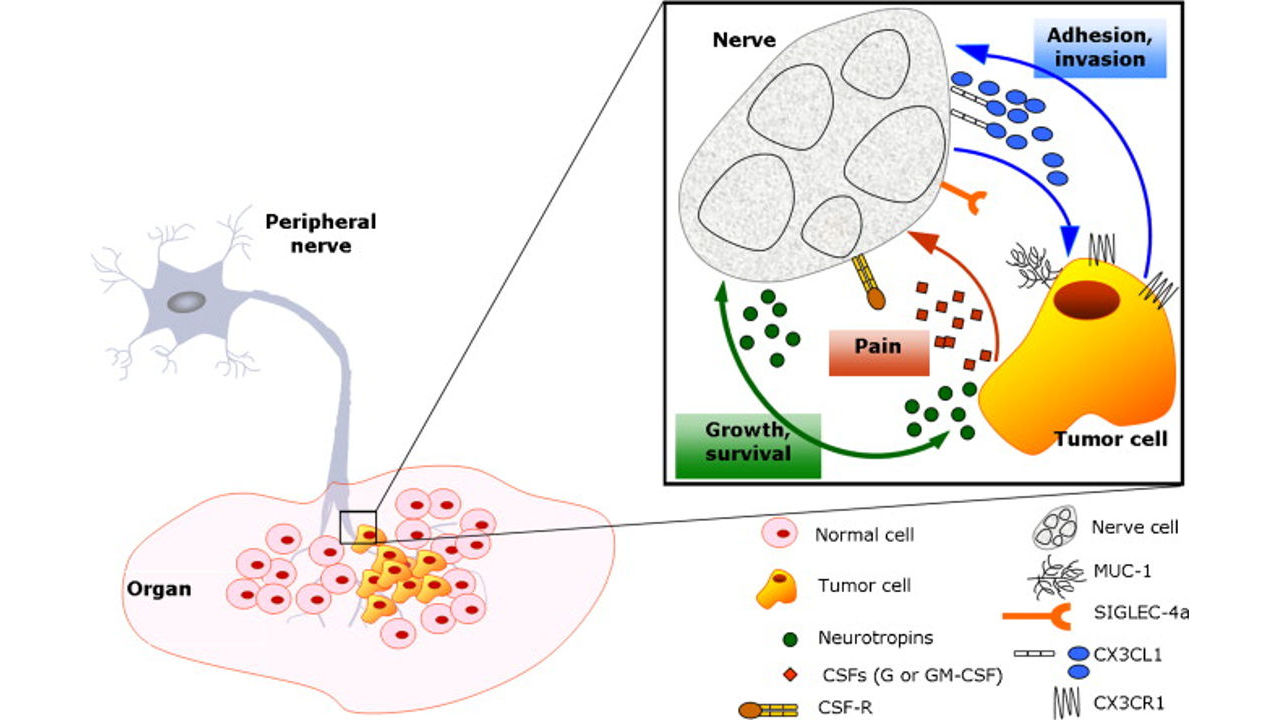
Exploring ‘What is Perineural Invasion in Prostate Cancer’? PNI is a pivotal factor in prostate cancer spread, often linked to early recurrence and bone metastasis. Its elusive nature makes detection challenging, potentially leading to incomplete removal and higher recurrence. Prostate nutrition can play a supportive role in overall wellness. Stay informed and vigilant!
What is it?
Perineural invasion occurs when cancer has spread into or around nerves in the urogenital tract and has invaded them, suggesting an aggressive cancer that could spread quickly throughout other parts of the body. When perineural invasion is discovered on a prostate biopsy, it could indicate aggressive cancer which has invaded into various nerves in its path and spread further than anticipated.
Perineural invasion (PNI) is most frequently observed in Gleason score 8 cancers, though it can occur with any tumor type. PNI has been linked with higher grades and risk for PSA recurrence but not associated with tumor counts or size of prostate gland.
PNI can be diagnosed using a biopsy sample analyzed under a microscope by a pathologist. Biopsy samples may reveal inflammation or prostatitis as well as diffuse and focal atrophy which affect different parts of the prostate gland and sometimes appear similar to cancerous growths.
Studies have demonstrated a correlation between PNI and prostate cancer recurrence and mortality; however, results vary across studies due to different definitions of PNI which can alter results (for instance whether cancer cells encase the nerve completely or simply touch it). Another reason may be differences in how individuals treat their prostate disease via surgery or radiotherapy treatments.
How is it diagnosed?
As soon as a doctor suspects prostate cancer, they’ll take a tissue sample and send it off for analysis by a laboratory. This test will show whether or not the cancer has spread beyond your prostate; if its pathology report shows perineural invasion this indicates that cancerous growth has spread into one or more nerves within your prostate gland.
If a doctor finds cancerous tissue around or within nerves, surgery or radiation therapy are often recommended to stop its growth and limit any potential issues from spreading further. This is because cancer tends to spread faster if it forms near nerves than elsewhere in the body.
Your doctor will consider a number of factors when making his or her recommendation about whether to treat you with surgery or radiation therapy, including the type and expected rate of growth of cancer. If a biopsy reveals low-grade cancer, however, active surveillance (watching rather than treating immediately) might be recommended as an approach.
Perineural invasion (PNI) can help predict how effective treatment for prostate cancer will be; however, results vary widely depending on which pathologist examines a biopsy sample. PNI may be difficult to spot on biopsy samples and doctors may miss it even when looking out for it; therefore MRI scans provide the most reliable way of searching for this form of cancer.
What is the outlook for men with this type of cancer?
Prostate cancer often spreads along nerves, an effect known as perineural invasion (PNI). PNI can increase the chances that cancer cells will spread outside the prostate, potentially signaling more aggressive tumor growth; research on this point remains inconclusive.
Your physician can easily diagnose perineural invasion through the results of your prostate biopsy. A biopsy involves taking a small sample of prostate tissue for examination under microscope.
Results will show if there are any abnormalities in tissue that could point towards cancer. If your doctor identifies cancer growing within your prostate gland, that would be considered stage 1. If one side or less than half of it are affected then that would be stage 2; and if cancer has spread through tubes that carry semen then that would indicate stage 3 for it.
Chances of survival for prostate cancer depend on several factors, including its state at diagnosis. Your physician will consider your age, other health conditions and whether or not the cancer has spread when deciding treatment options for you.
What is the treatment for this type of cancer?
Prostate cancer cells that enter the perineural space may find that nerves provide a new route out of their prostates for tumor cells to travel outside via nerve fibers rather than using blood vessels or lymphatic drainage, potentially increasing the likelihood of metastasis throughout their bodies. A 2015 study discovered that men with PNI had eleven times greater risk for bone metastasis compared with those without this feature.
Doctors can identify this form of prostate cancer through a biopsy procedure, which involves inserting a needle into the prostate and taking small samples of tissue for examination by a laboratory. A pathology report can reveal if cancer has spread into any of the nerves in or around the prostate; this finding is most frequently found among people who have prostate adenocarcinoma; less frequently seen among people who have intraductal carcinoma, which tends to grow differently and can be harder to treat than its counterpart.
Doctors can identify PNI by inspecting very thin slices of tissue known as cores during surgery to remove the prostate gland (a prostatectomy). A surgeon may have to cut portions of nerves that run along either side of the prostate gland, which could impact erectile function afterwards. If biopsies indicate cancerous tumor cells have infiltrated any nerves near the prostate gland, treatment could include hormone therapy, radiation therapy or both in order to kill off any remaining cancer cells and prevent their regrowth.


